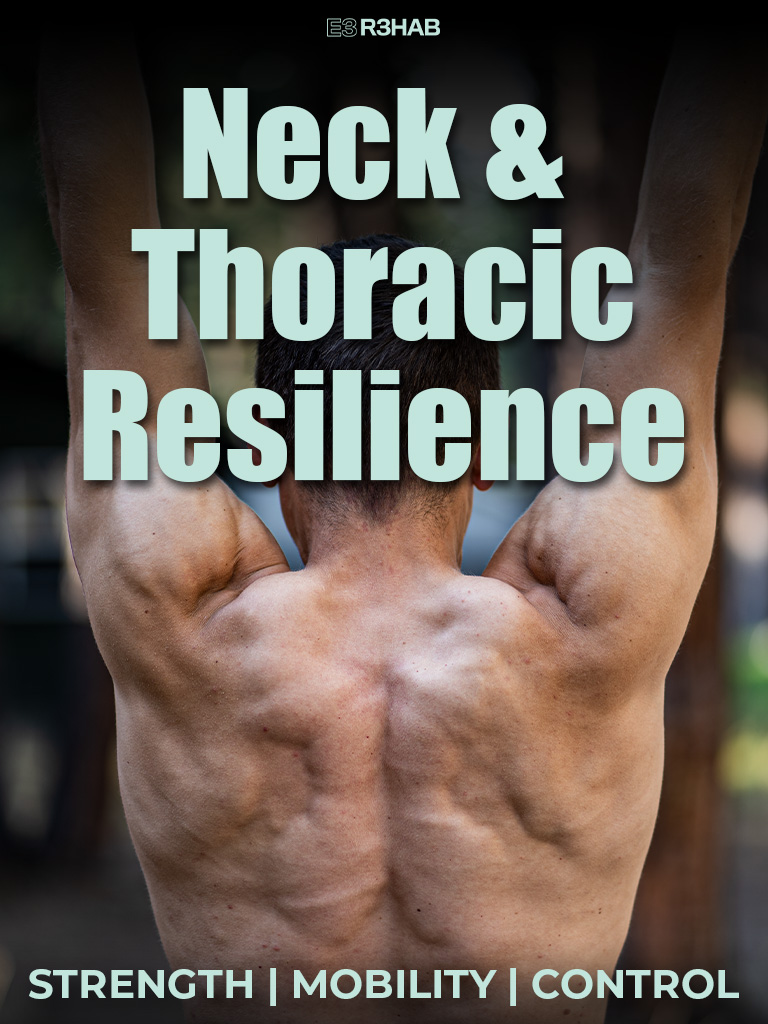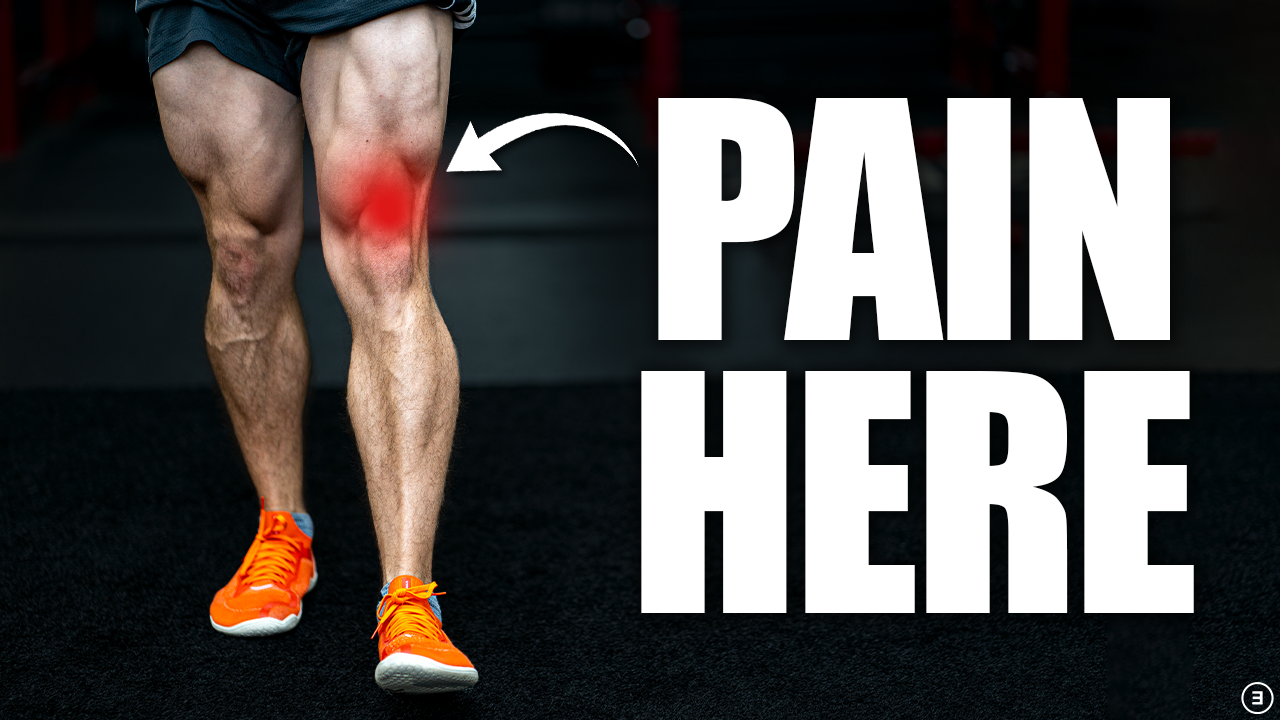The purpose of this blog is to show you exercises and strategies for managing that discomfort between your shoulder blades, often referred to as “rhomboid pain.”
Although you may associate this pain with your rhomboid muscles, it’s more likely related to irritation of structures in your neck. Therefore, the first two groups of exercises promote movement of the neck and upper back.
Do you have new, lingering, or recurring neck or thoracic symptoms that’s stopping you from doing the things you enjoy or keeping you from feeling like yourself? Check out our Neck & Thoracic Resilience Program!
Cervical & Thoracic Rotation Range of Motion (Choose 1 Option)
The first category of exercises addresses cervical and thoracic rotation range of motion. I’ll provide 4 options to choose from, along with recommended sets and reps.
Option 1: Side Lying Thoracic Rotation – Lie on your side with your hips and knees bent, and head supported. Rotate your top shoulder and arm toward the floor behind you, or as far as you can comfortably go.
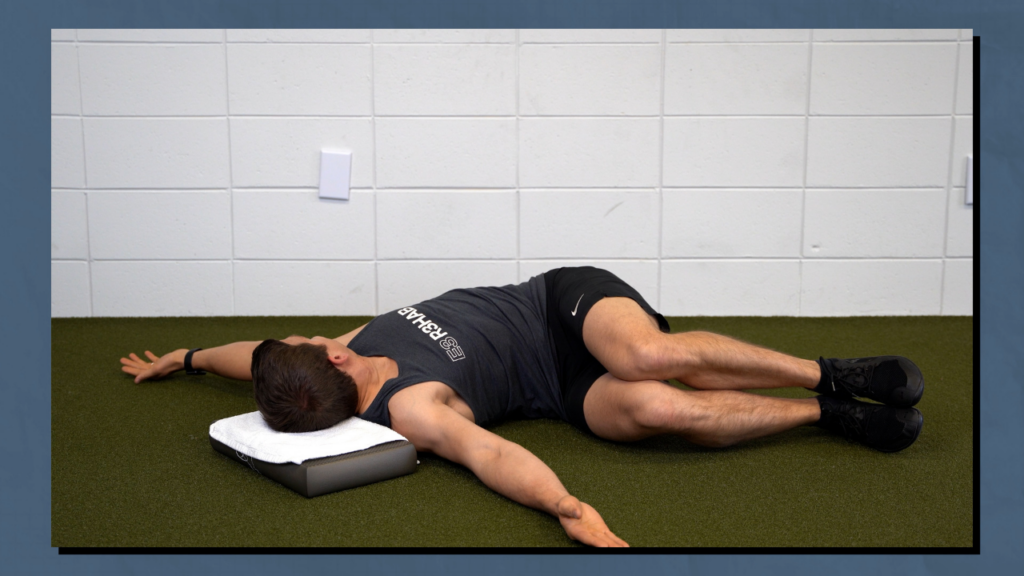
Option 2: Quadruped Thoracic Rotation – Sit back on your heels with your knees apart and hands out in front of you. Place one hand behind your head, rotate up toward the ceiling as far as you can comfortably go, and then rotate back the other direction.
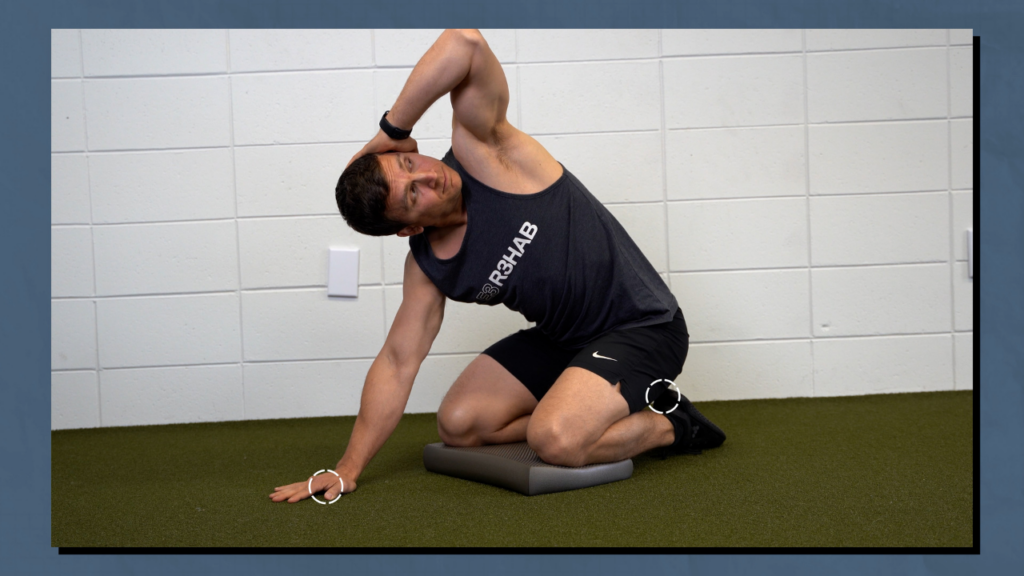
Option 3: Half Kneeling Thoracic Rotation – Set up in half kneeling against a wall with your arms out in front of you. Rotate your shoulder and arm toward the wall behind you, or as far as you can comfortably go.
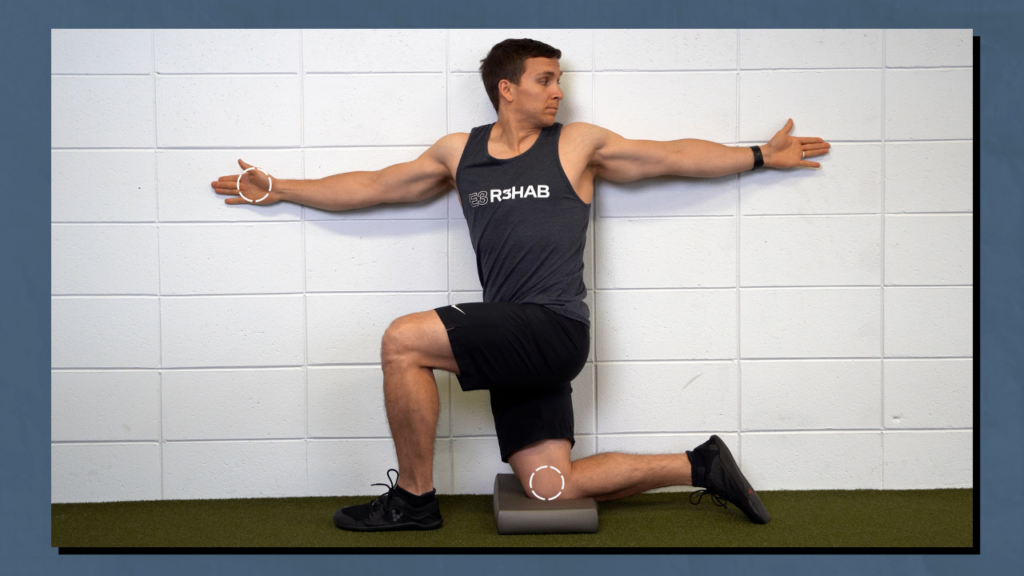
Option 4: Seated Thoracic Rotation – With your arms out in front of you, reach one hand toward the wall behind you, return to the starting position, and then repeat on the other side. You can also lean forward, grab the opposite knee, and reach up toward the ceiling.
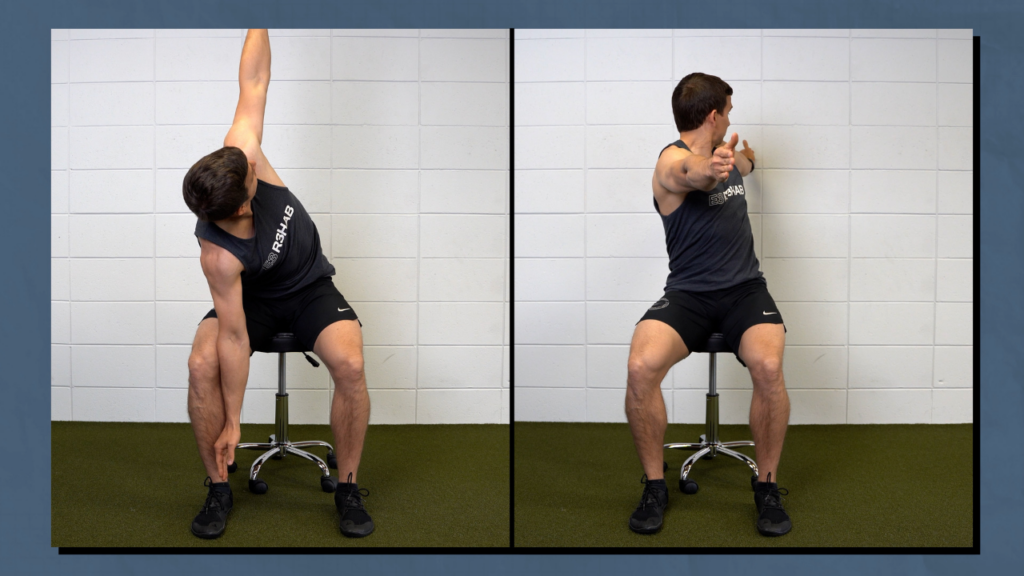
To make any of the movements easier or less intense, you can place your hand across your chest.
Determine which exercise feels best for you and perform it 2-4 times per day for 6-8 slow and controlled repetitions per side.
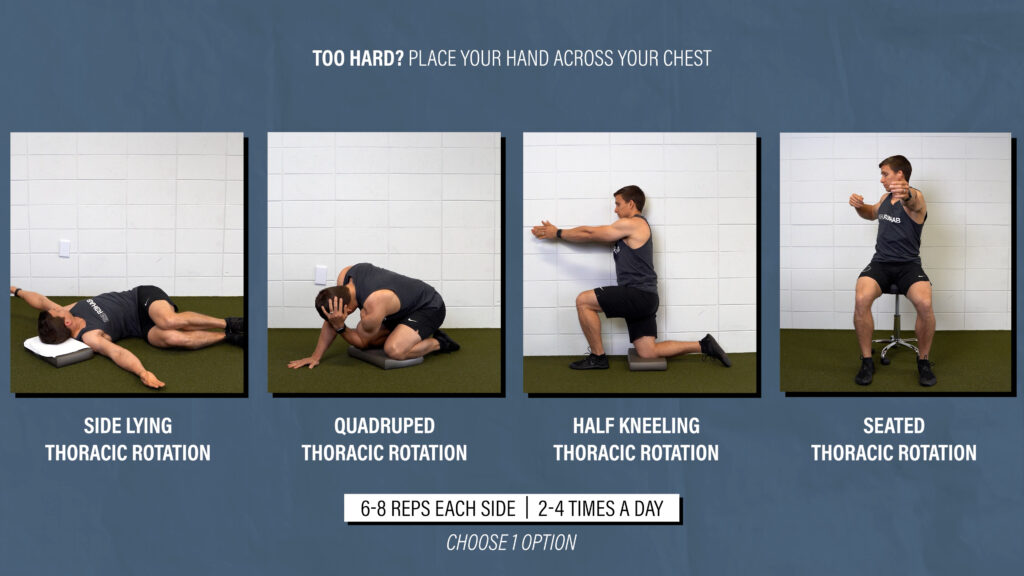
Cervical & Thoracic Flexion/Extension Range of Motion (Choose 1 Option)
The second category of exercises addresses cervical and thoracic flexion and extension range of motion. Once again, I’ll provide 4 options to choose from, along with recommended sets and reps.
Option 1: Quadruped Segmental Cat/Cow – Sit back on your heels with your knees apart and hands out in front of you. Tuck your chin, slowly bring it toward your chest, round your upper back, and work your way down as far as you can comfortably go. Then slowly reverse that motion.
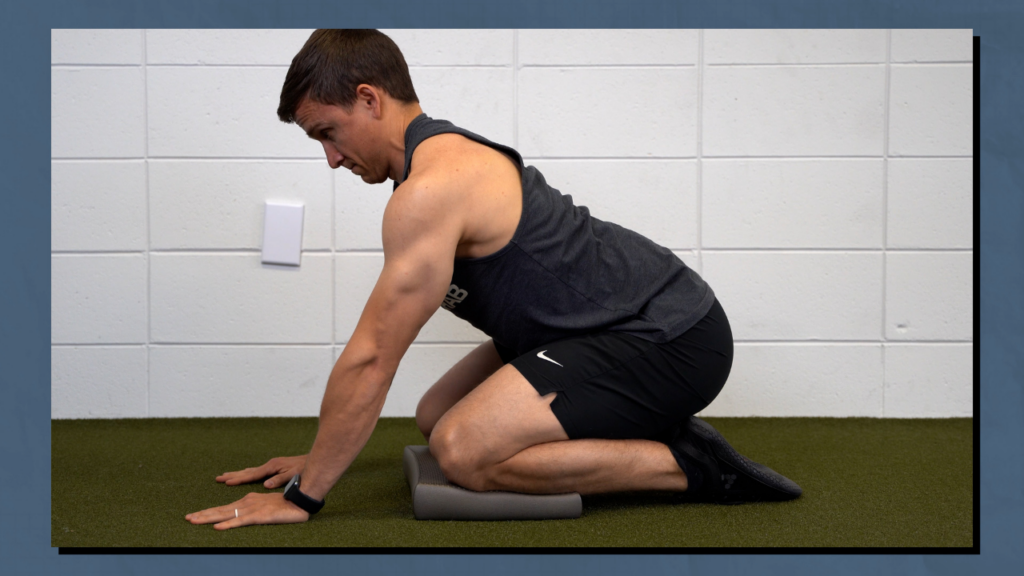
Option 2 is performing the same movement in sitting and option 3 is performing it in standing.
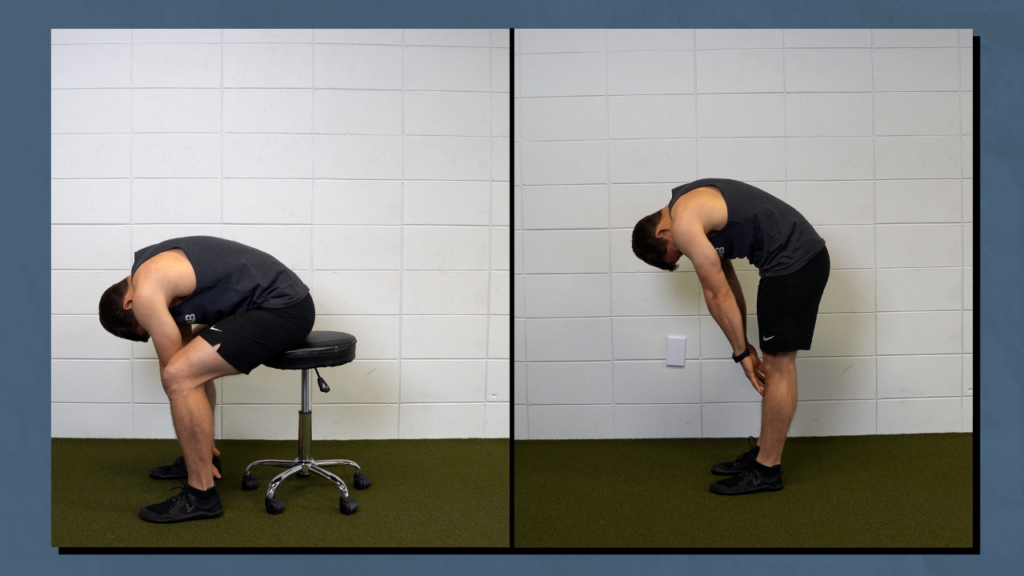
Option 4: Thoracic Extension Over A Foam Roller – With your hands supporting your head, take a deep breath in while arching your upper back over a foam roller. Then take a deep breath out as you move in the opposite direction. Do this at multiple points along the upper back.
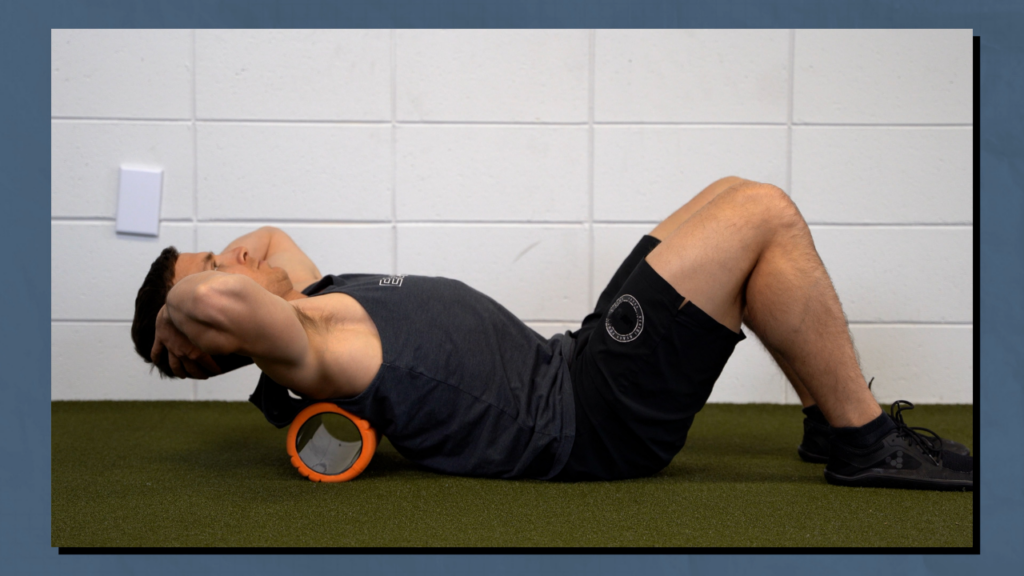
To make any of the movements easier or less intense, move slower and through a lesser range of motion.
Determine which exercise feels best for you and perform it 2-4 times per day for 3 to 5 slow and controlled repetitions.
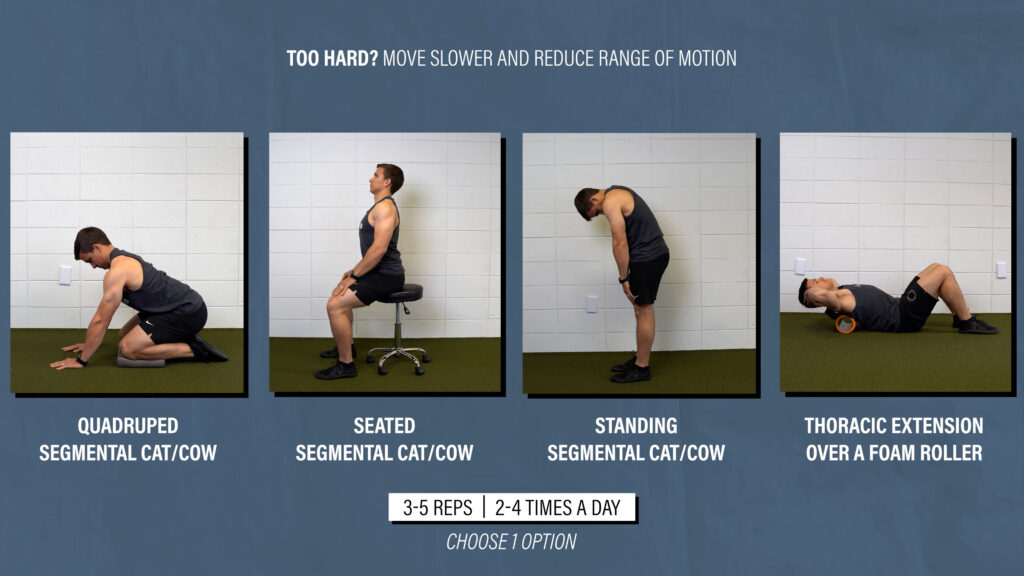
Another common misconception related to symptoms in this area is that it needs to be fixed by always maintaining your shoulder blades down and back. However, constantly trying to put yourself in this position can actually exacerbate symptoms. Therefore, the next two groups of exercises promote movement and strengthening of the shoulder region.
Scapular Protraction & Upward Rotation (Choose 0-1 Option)
The first category of exercises promotes protraction and upward rotation of the shoulder blades. I’ll provide 3 options to choose from, along with recommended sets and reps.
Option 1: Forward Facing Wall Slide – Place your arms in a pillowcase, grab the inside corners, and imagine rotating your hands outward. Then squeeze your glutes, take a deep breath out, and press the back of your forearms into the wall as you slide them up toward the ceiling. Take a breath in, return to the starting position, and repeat.
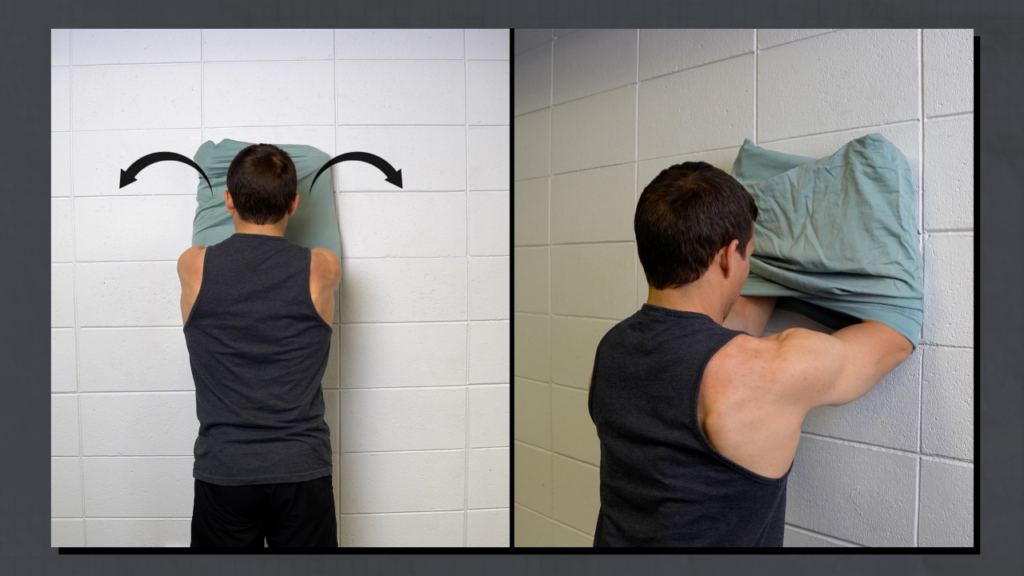
Option 2: Dolphin Pose – Set up in a plank, squeeze your glutes, take a deep breath out, and press the floor away from you as you bring your hips toward the ceiling. Take a breath in, return to the starting position, and repeat.
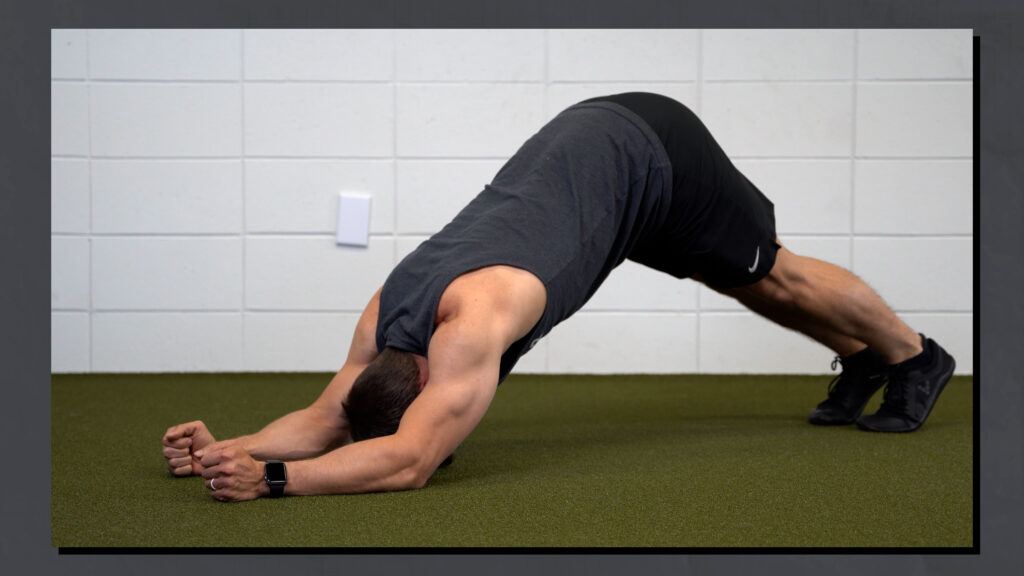
Option 3: Resisted Scaption – While standing on a band, raise your arms toward the ceiling to at least 120 degrees with your thumbs pointing up. Slowly return to the starting position and repeat. You can also do this sitting, one arm at a time, and/or with weights.
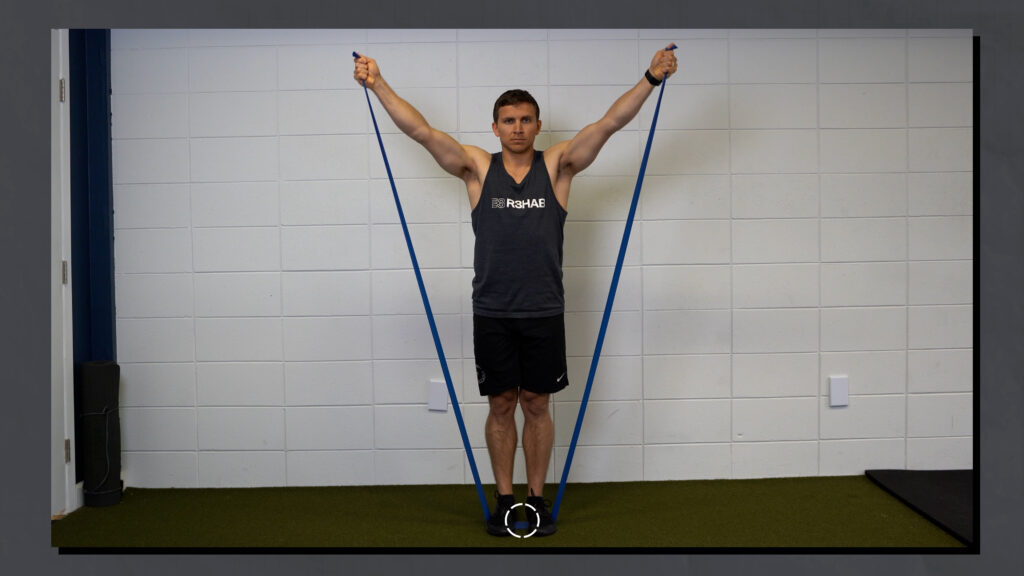
Determine which exercise feels best for you and perform 2-3 sets of 6 to 8 slow and controlled repetitions every other day.
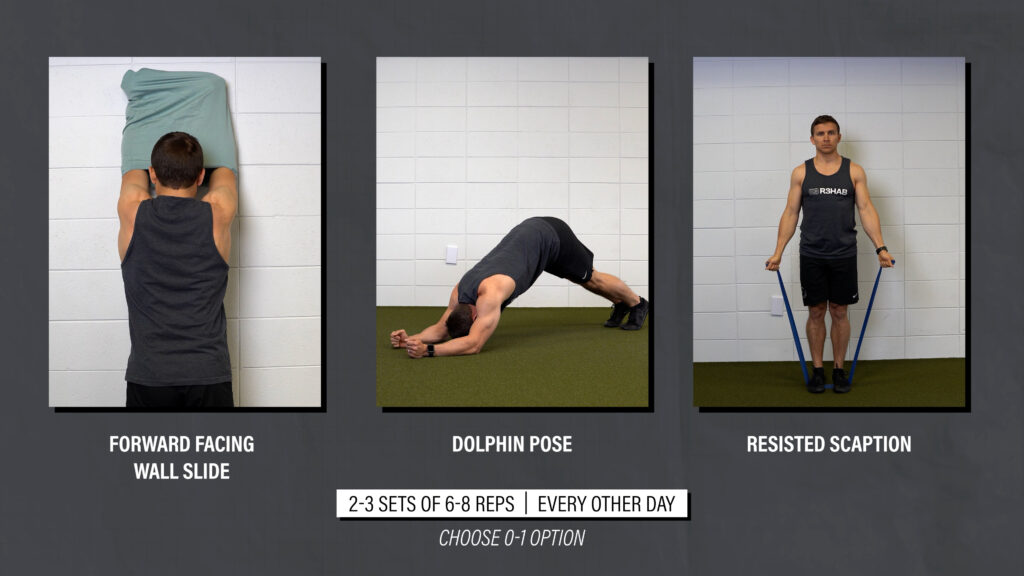
Scapular Retraction (Choose 0-1 Option)
The second category of exercises promotes scapular retraction through various ranges of motion. Once again, I’ll provide 3 options to choose from, along with recommended sets and reps.
Option 1: Wall Slide – Sit flat against a wall with your elbows and hands touching the wall. Try to maintain contact with the back of your hands as you slide up toward the ceiling as far as you can comfortably go before returning to the starting position. You can also do this standing.
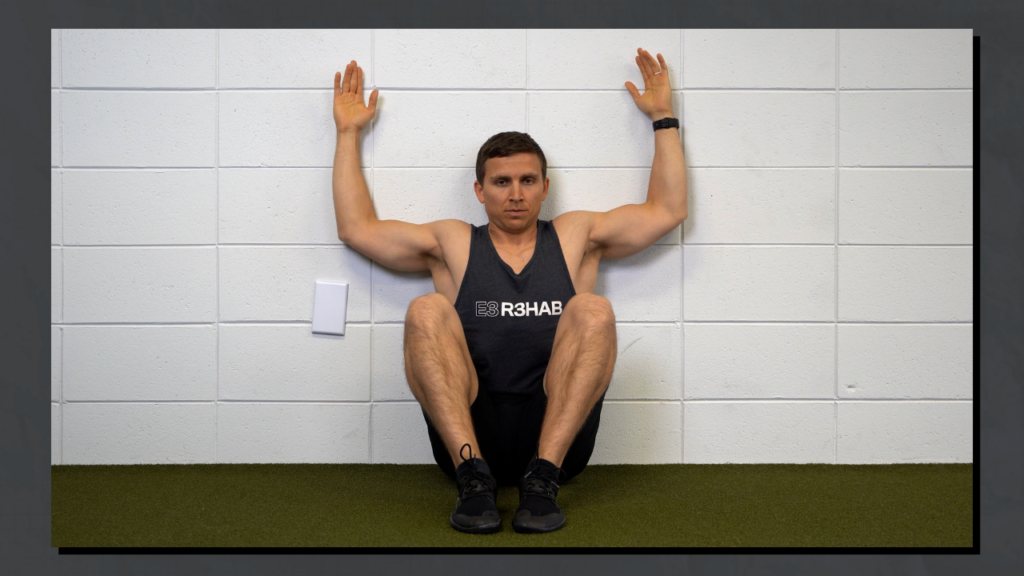
Option 2: Prone Angel – Lie on your stomach with your hands down by your side. Slightly lift your head off the ground as you tuck your chin, reach your hands overhead, and return to the starting position.
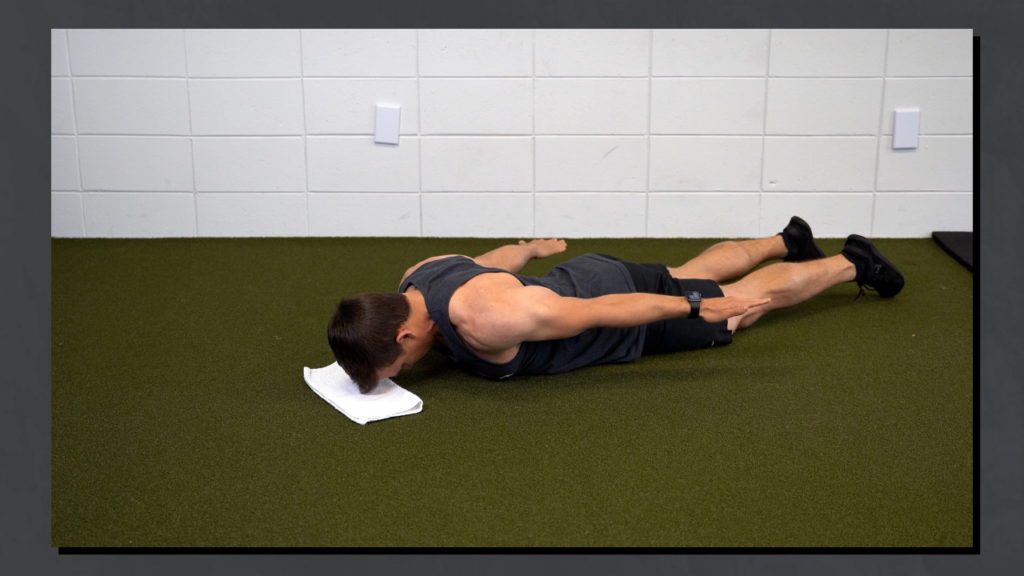
Option 3: Banded Angel – Anchor a band to a sturdy object in front of you. Start with your hands down by your side (palms facing forward), reach overhead, and return to the starting position. You can also do this sitting.
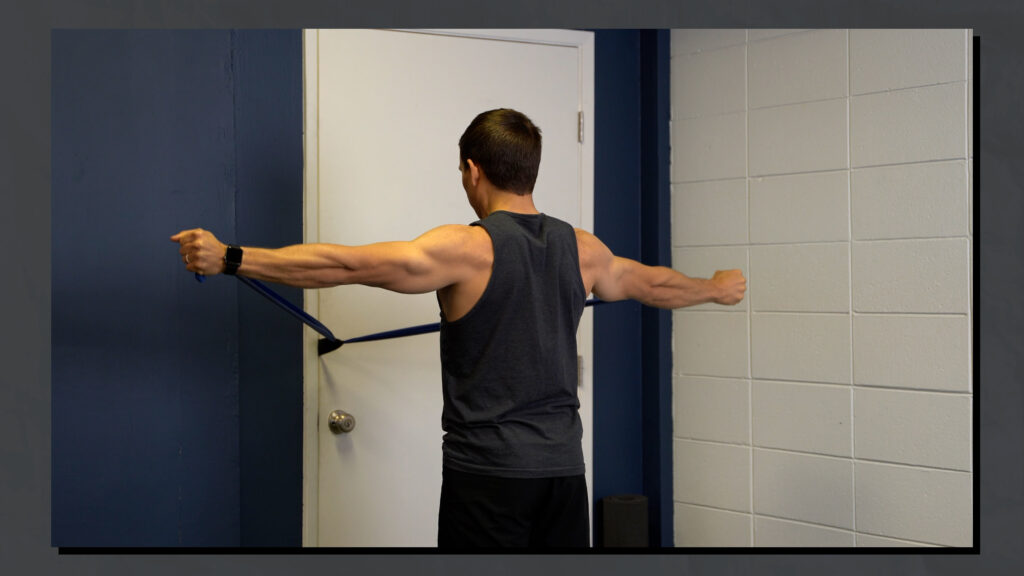
Determine which exercise feels best for you and perform 2-3 sets of 6 to 8 slow and controlled repetitions every other day.
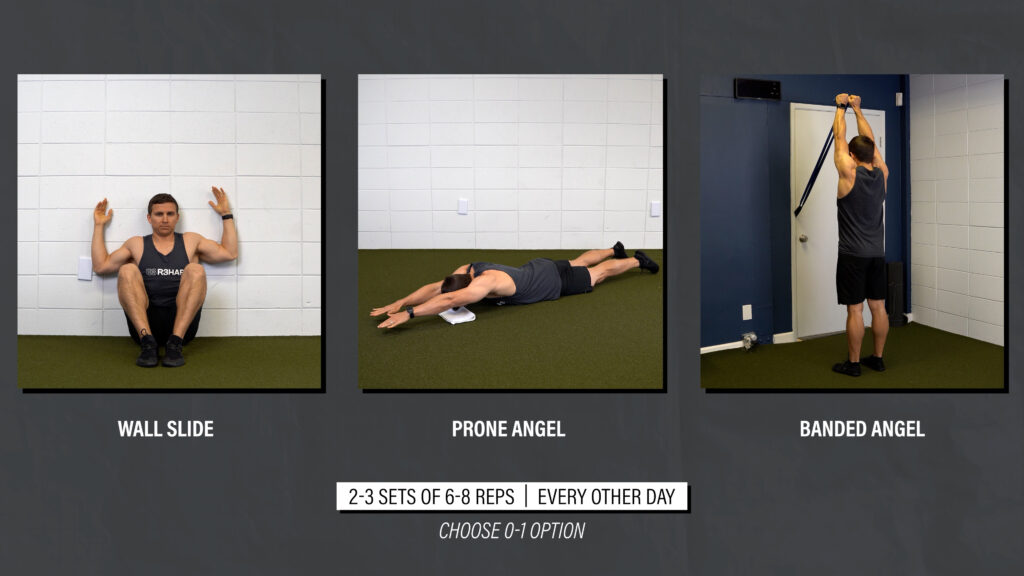
Postures, Positions, & Lifestyle Factors
I alluded to this earlier, but I want to emphasize that there is no perfect posture or position that’s going to be the answer to all of your problems. Explore what works well for you rather than trying to be rigid with your approach. And.. move often.
It’s also important to consider other aspects of your life, such as stress, diminished sleep quality or quantity, or periods of prolonged inactivity. If you notice that certain lifestyle factors contribute to your symptoms, see if you can modify them. For example, if you’re in front of your phone, computer, and TV for most of the day, can you incorporate a few 10 minute walks to break that up?
“Rhomboid Pain” Summary
In summary, the symptoms that you’re experiencing between your shoulder blades, often referred to as “rhomboid pain,” are more likely associated with irritation of structures in your neck. Therefore, it can be helpful to modify positions, postures, or movements that are aggravating, address other aspects of your life such as sleep habits and excessive screen time, and incorporate exercises that get your neck, upper back, and shoulders moving in a variety of ways.
The exercises I presented aren’t inherently special, but they’re easy to do at home or at work and require little to no equipment. However, you’re welcome to explore other movements as well. Be sure to start slowly, keep exercises tolerable, and build up gradually. More isn’t always better. This is an issue that many people have dealt with for months or years, so don’t necessarily expect for this to be a “quick fix.”
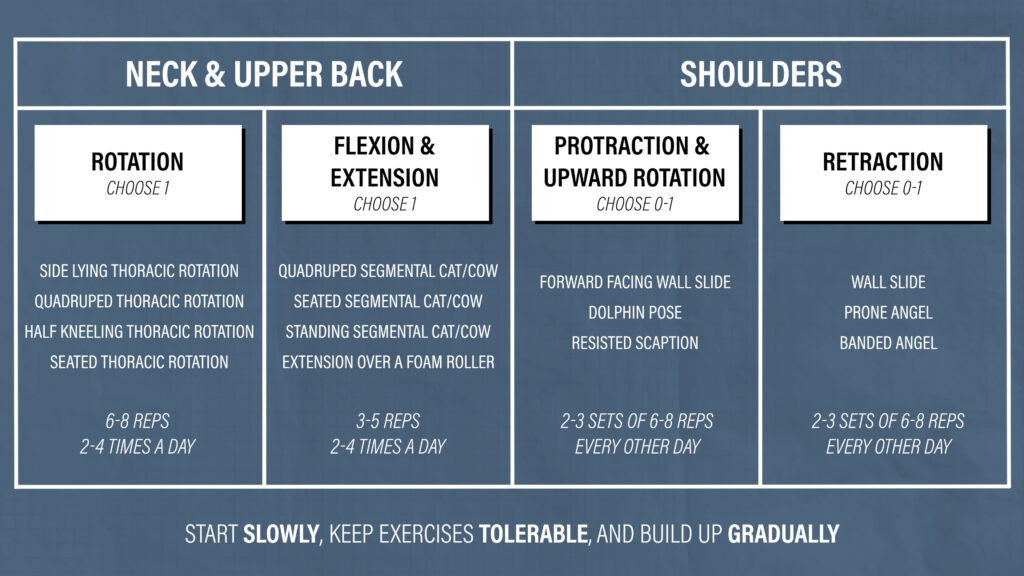
Lastly, I understand that other issues can contribute to symptoms in this area. As always, consult with a medical doctor to present your concerns.
Don’t forget to check out our Neck & Thoracic Resilience Program!
Want to learn more? Check out some of our other similar blogs:
Rhomboid Pain, Cervical Radiculopathy, Disc Herniations
Thanks for reading. Check out the video and please leave any questions or comments below.



